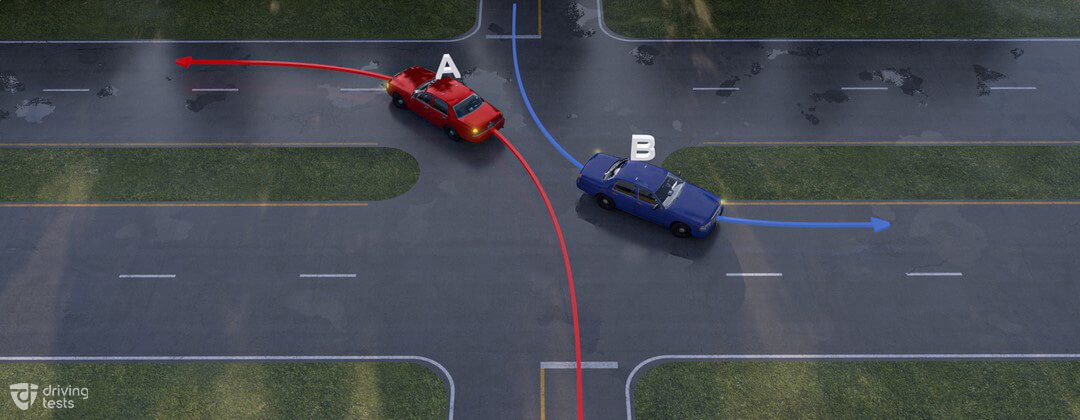
Two cars are turning onto a divided highway. Which one is turning correctly?
Car B
(When you turn, you should cross as few lanes as possible unless signs state otherwise. That is, you should turn left from the left lane and turn right from the right lane, and you should turn into the closest lane of traffic that is moving in the right direction. Here, Car A has incorrectly turned into the far lane. Car B has turned correctly into the closest lane)

Three cars arrive at an uncontrolled T-intersection. In what order should the cars proceed?
B, C, A (at a T-intersection, cars on the through (main) road (like B and C) have the right-of-way, so car A must yield to cars B and C. Cars turning left must yield to oncoming traffic, so car C must yield to car B. Hence, the order of the cars B, C, A)
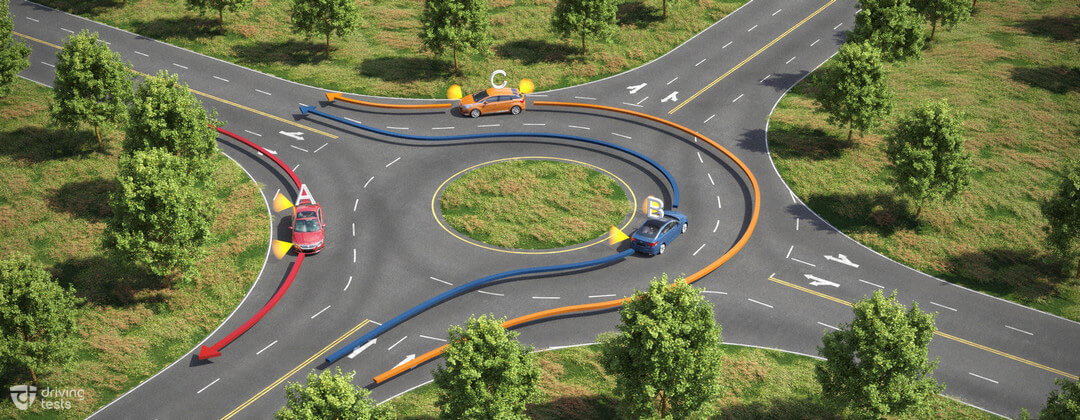
Which car is NOT using the roundabout correctly?
Car C (In a multilane roundabout or any other type of intersection, you must always follow road signs and pavement markings. In a two-lane roundabout, unless signs indicate otherwise, you should turn left from the left lane, turn right from the right lane, and drive straight through using either lane. Here, Car C has incorrectly turned left from the right lane.)
A car is turning right on a red light. At the same time, a pedestrian starts to cross the road that the car is about to enter. Which one must yield?
The Car

Is this car legally parked?
No. You cannot park within 10 feet of a fire hydrant
Before entering the intersection, before the stop line and before the crosswalk
What must you do at a flashing yellow traffic signal?
Slow down and proceed with caution
Where can you turn left at a red light?
When you are turning from a one-way road onto another one-way road
What should you do if you are traveling along the right lane of a four-lane highway and you see an emergency vehicle pulled over with its lights flashing ahead?
You must leave an empty lane between your vehicle and the emergency vehicle
Yield to pedestrians and oncoming vehicles

Two cars arrive at an uncontrolled intersection at about the same time. Who car must yield?
Car A must yield because it's to the left of Car B
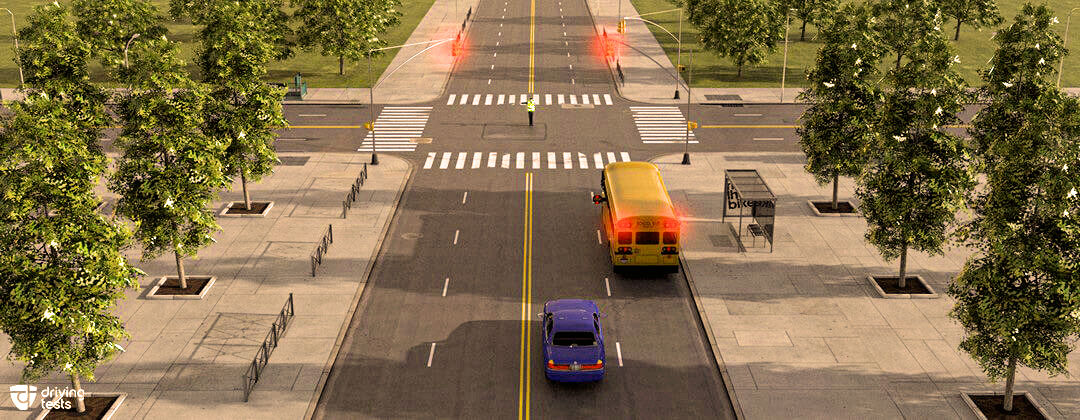
Who should you obey in this situation?
The traffic officer
Can you pass a school bus stopped with red signals flashing?
No you must come to a complete stop
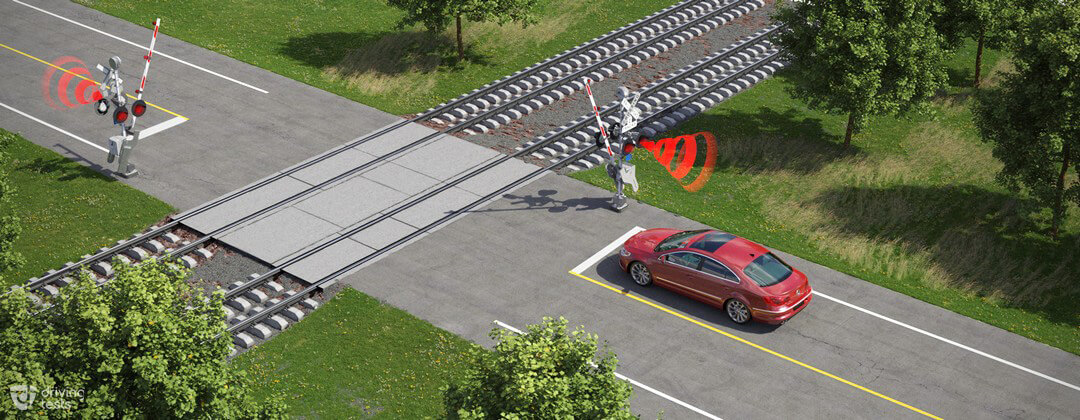
What should you do if you arrive at a railroad crossing that has flashing red lights and a warning bell and you see a training coming?
You must stop at least 15 feet from the light post or gate
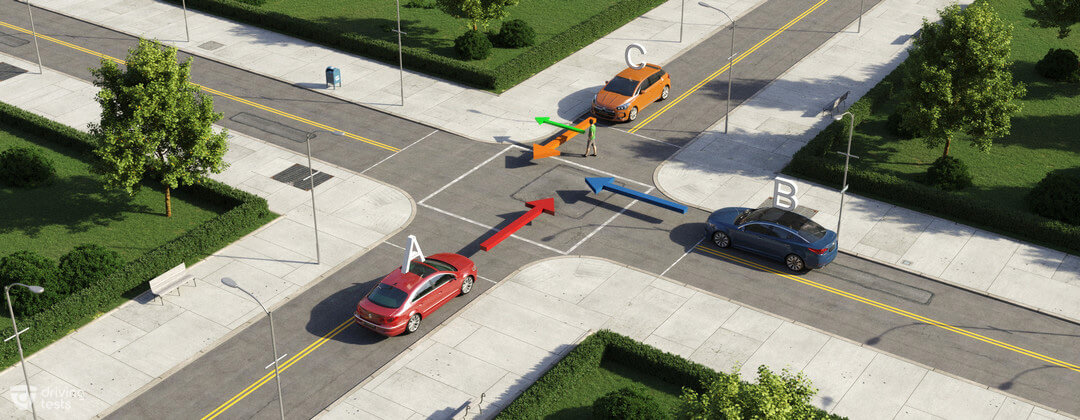
Who has the right-of-way?
The pedestrian.
(A vehicle must yield to pedestrians in a crosswalk. Here, Car C must yield to the pedestrian. And after considering pedestrians, each car must yield to the one on its right. Therefore, Car A must yield to Car B, Car B must yield to Car C, and Car C must yield to the pedestrian.)
What must you do at a flashing yellow traffic signal?
Slow down and proceed with caution
On a highway, you are preparing to get off at the next exit. No other vehicles are around. Do you still need to signal?
Yes, for at least 500 ft.

Car B has entered an intersection to turn right on a red signal. Car A has a green light and wants to proceed straight through the intersection. Which car can go first?
Car A must yield to Car B because Car B is already in the intersection (If you have a green signal, you may proceed through the intersection, but only after yielding to all traffic and pedestrians that are already in the intersection. Here, Car A must yield to Car B because Car B has already entered the intersection)
You arrive at an intersection whose traffic signals are not working; none of the lights are on. What should you do?
Treat the intersection as an all-way stop
True or False
Hydroplaning can start at speeds as low as 35 mph
True (Hydroplaning occurs when you drive too fast over standing water and effectively ski over its surface. Even with good tires, your vehicle can start to hydroplane at speeds as low as 35 mph. (Badly worn tires can cause the vehicle to hydroplane at speeds as low as 25 mph.) This may send your car into a skid. If you hydroplane, try to avoid accelerating, steering, or braking; let the car slow itself down. Do not use your cruise control on wet roads. If your vehicle loses traction, the cruise control may spin the wheels to try to maintain a constant speed)
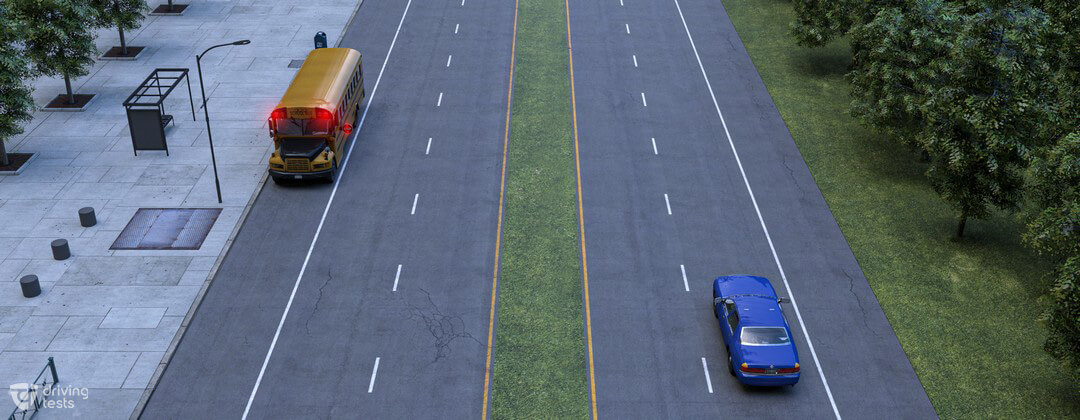
You approach a school bus that has stopped on the opposite side of the divided highway. Its red signals are flashing. Do you need to stop here?
No, you do not need to stop
(Normally, vehicles traveling in either direction must stop for a school bus that has stopped for passengers. However, this rule does not apply if the school bus is on the opposite side of a divided roadway (a roadway with a non-drivable median or barrier))

What does this sign mean?
270 degree turn ahead. Slow down and proceed with caution
Are you allowed to drive in an HOV lane?
Yes, but only if you have atleast one passenger

What does this sign mean?
Hairpin curve ahead
Are you allowed to turn right at a red light?
Yes, but only after coming to a stop and yielding to traffic and pedestrians